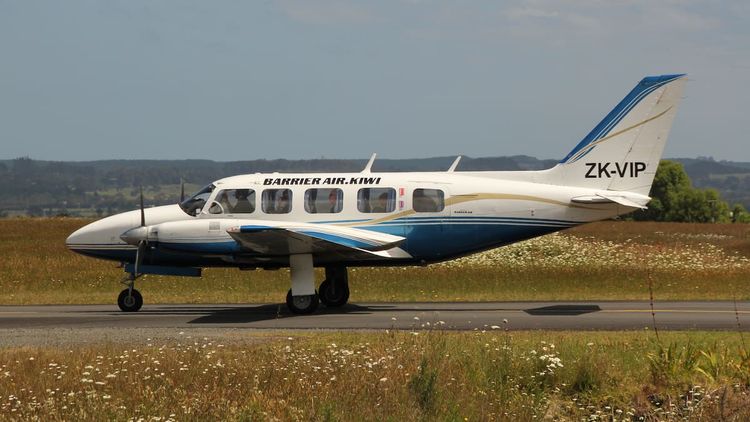Barrier Air: Regional airline busier as Air NZ reduces capacity

By Varsha Anjali
Multimedia Journalist·NZ Herald·
15 Oct, 2024 03:50 AM3 mins to read
Barrier Air has been operating its Auckland-Kerikeri service since August. Photo / Supplied
Regional airline Barrier Air says it has seen a rise in business as Air New Zealand makes cutbacks to some of its domestic services.
On September 30, Air New Zealand announced it was axing its direct service between Wellington and Invercargill next January because of a decline in domestic demand “in response to a tough economic backdrop”.
Two weeks ago it revealed it is reducing its capacity on three more regional routes, affecting Queenstown, Christchurch, Wellington, Dunedin, Blenheim, and New Plymouth.
Speaking to Mike Hosking on Newstalk ZB this morning, Barrier Air chief executive Grant Bacon said the airline is now fulfilling around 70% of its capacity for its route between Auckland and Kerikeri and is “paying its way”.
“There’s a fair amount of robustness we need to see with Kerikeri in terms of making sure the model does work but as the days and months go on we’re seeing that a complementary service in line with the national carrier is actually proving to be great for consumers and has a viable business case as well,” he said.
Barrier Air, which operates scheduled passenger, freight and charter services, is among a number of small regional operators in New Zealand, including Air Chathams, Golden Bay Air, Originair and Sounds Air.
Founded in 1983, the New Zealand-owned airline flies from Auckland, Great Barrier Island, Kaitāia, Kerikeri, Tauranga and Whitianga. As of 2022, its fleet consisted of five Cessna Grand Caravans.
While its routes to and from Auckland have experienced increased demand, Bacon explained there are challenges for longer services due to the poor condition of the industry.
“What we see is the issue in terms of those longer routes is ... at the moment the regional aviation space is in poor shape and that not only is relevant to New Zealand - it’s also moving into other countries as well,” Bacon told Hosking.
“That primarily comes down to the fact that there’s actually not a lot of aircraft being manufactured right now that is capable of doing those longer routes.
“Not only can you not find aeroplanes, you can’t find parts for them and that’s a major contributor to where the fare prices had to go over the last 18 months in terms of what a consumer pays and then the technology.
“A lot of legacy aircraft manufacturers of a smaller nature have stopped producing or they are moving their attention elsewhere so it is an issue to fulfill an interisland route of a slightly longer route.”
Recently, heavyweights in the aviation industry have been affected by mass strikes and a decline in manufacturing.
Last week Boeing announced it was cutting about 10% of its workforce with chief executive Kelly Ortberg telling staff, “our business is in a difficult position, and it is hard to overstate the challenges we face together”.
The news came after 33,000 Boeing employees walked out of its factories in Washington as one of its unions rejected a new contract.
French aerospace company Airbus recently said that its September deliveries were down by 9% compared to how many it delivered in September 2023, Reuters reported.









































